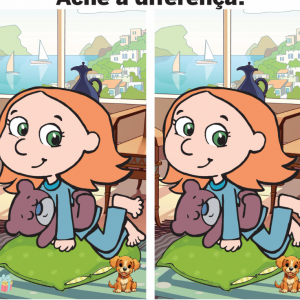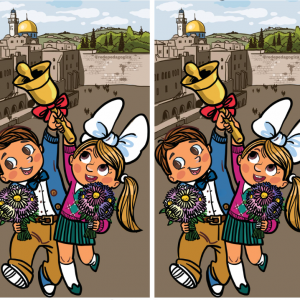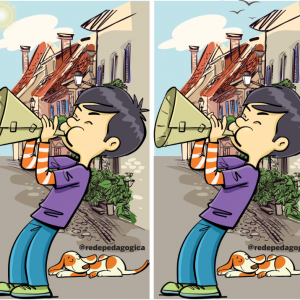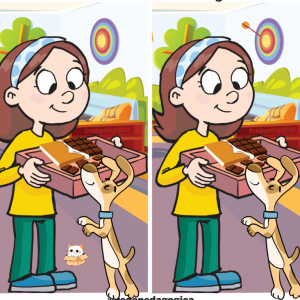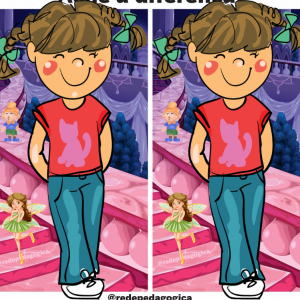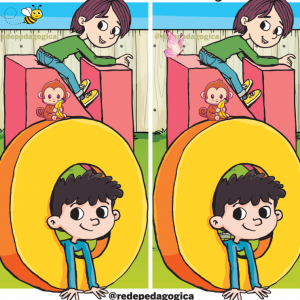The Power of Visual Puzzles: How ‘Spot the Difference’ Games Enhance Cognitive Development
Have you ever found yourself engrossed in a “spot the difference” puzzle? It’s more than just a fun way to pass the time; it’s a powerful tool for improving cognitive and social skills, all while keeping you entertained. In this article, we will explore how visual puzzles, like the ones featuring two seemingly identical images with subtle differences, can improve a child’s attention, problem-solving skills, and emotional intelligence.
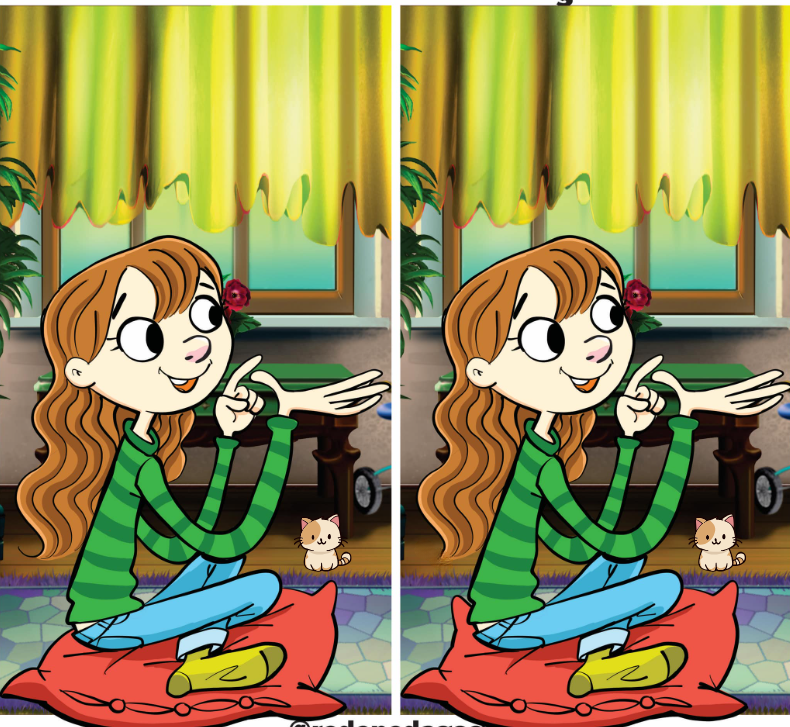
The Cognitive Benefits of “Spot the Difference” Games
Improving Attention to Detail
At its core, a “spot the difference” game requires sharp attention to detail. Whether you are comparing two images of a young girl sitting on a cushion, trying to identify subtle discrepancies, your brain is actively working to notice even the smallest differences.
This exercise engages the brain’s visual processing system and improves the ability to focus. For children, the task helps build a critical skill — paying attention to small details in their environment. Whether it’s a tiny change in color or an item missing from the background, these games strengthen attention spans, which is especially beneficial in academic and real-life settings where focus is key.
Enhancing Memory and Observation Skills
The visual nature of “spot the difference” games also works wonders for memory and observation skills. To solve the puzzle, players must remember the original image and mentally compare it to the modified one. Over time, repeated practice strengthens short-term memory, making it easier for children to remember and analyze visual information.
In the case of the image of the girl holding a book and counting the differences, players must focus on various objects in the room and remember their positions or colors. This skill is directly applicable to other situations that require visual memory, such as navigating a new area, studying for exams, or analyzing complex tasks.

Building Problem-Solving Skills Through Puzzles
Learning to Solve Problems in Stages
Spotting differences is not just about visual acuity; it’s also about problem-solving. Players must analyze two nearly identical images, break them down, and identify discrepancies. These mental steps mirror real-world problem-solving, where individuals break down large challenges into smaller, more manageable tasks.
Children develop problem-solving skills as they strategize to find each difference. In the puzzle with the girl sitting on the pillow, they are presented with a challenge, requiring them to analyze each section of the image systematically. This exercise teaches children how to approach problems in an organized and strategic manner, making it a valuable skill both in school and in life.
Overcoming Frustration and Learning Patience
Another aspect of these puzzles is learning to deal with frustration. When the differences are hard to spot, players must exercise patience, persistence, and determination. This ability to persevere when the solution isn’t immediately apparent is a life skill that transcends the puzzle itself.
By engaging in these puzzles, children learn the importance of not giving up and understand that persistence is often the key to overcoming challenges. Just like the girl in the image, who continues searching for the differences, players develop a resilient attitude that can be applied in academic, personal, and professional situations.

The Social and Emotional Benefits of Spot the Difference Games
Improving Social Interaction and Communication
While “spot the difference” games can be played individually, they also provide an excellent opportunity for group play. When played in pairs or teams, these puzzles encourage communication and collaboration. Teamwork is essential as players share observations and ideas, helping each other find the differences.
For children, this is an excellent way to practice social skills, such as active listening, turn-taking, and verbal communication. By discussing the puzzle with others, children learn how to explain their thought process, offer suggestions, and work towards a common goal — skills that are transferable to every part of life, from school projects to workplace collaboration.
Building Emotional Intelligence Through Challenges
“Spot the difference” games also foster emotional growth. The act of solving a puzzle provides a sense of accomplishment and boosts self-esteem when children successfully identify all the differences. However, there is also a learning process in managing frustration, especially when some differences are hard to spot.
Through this, children develop emotional intelligence, learning how to handle both success and failure. The puzzle environment provides a safe space to practice managing their emotions, which is a key factor in building confidence and resilience in everyday life.

Boosting Cognitive Flexibility and Mental Agility
Flexibility in Thinking and Decision Making
The process of switching between comparing two images, analyzing the differences, and remembering the original image helps train the brain to think more flexibly. As children play more “spot the difference” games, they become better at switching between tasks and adapting their thinking to solve different kinds of challenges.
This cognitive flexibility is critical in real-world problem-solving. Whether it’s switching between tasks at work, adjusting strategies in a game, or dealing with unexpected events in life, the ability to think on your feet and adapt quickly is a valuable skill.
Training the Brain to Process Information Efficiently
The nature of visual puzzles also encourages faster information processing. As children continue to practice “spot the difference” games, they learn to recognize patterns quickly, increasing their speed and accuracy when analyzing complex images.
Mental agility improves as children train their brains to process visual stimuli rapidly. This is similar to how athletes train their bodies to react quickly; children train their minds to become faster and more efficient at interpreting visual information.

How Spot the Difference Games Affect Long-Term Cognitive Development
Boosting Concentration and Focus
“Spot the difference” games provide a great way for children to exercise their brains. The constant demand for focus on minute details helps improve the ability to concentrate. The more frequently children play these puzzles, the better they become at blocking out distractions and concentrating for longer periods of time.
In our modern world, where distractions are everywhere, the ability to concentrate is invaluable. Through these games, children not only improve their attention span but also learn how to block out distractions and stay focused on a task at hand.
Enhancing Visual Memory and Recognition
These games also contribute to visual memory development. By frequently engaging in puzzles where players must remember and compare images, children enhance their visual recall ability. The ability to recognize patterns, colors, and objects — even in new situations — is essential for academic success and daily life.
Whether children are learning new concepts in school or navigating unfamiliar environments, the ability to remember visual information plays a key role in processing and understanding the world around them.
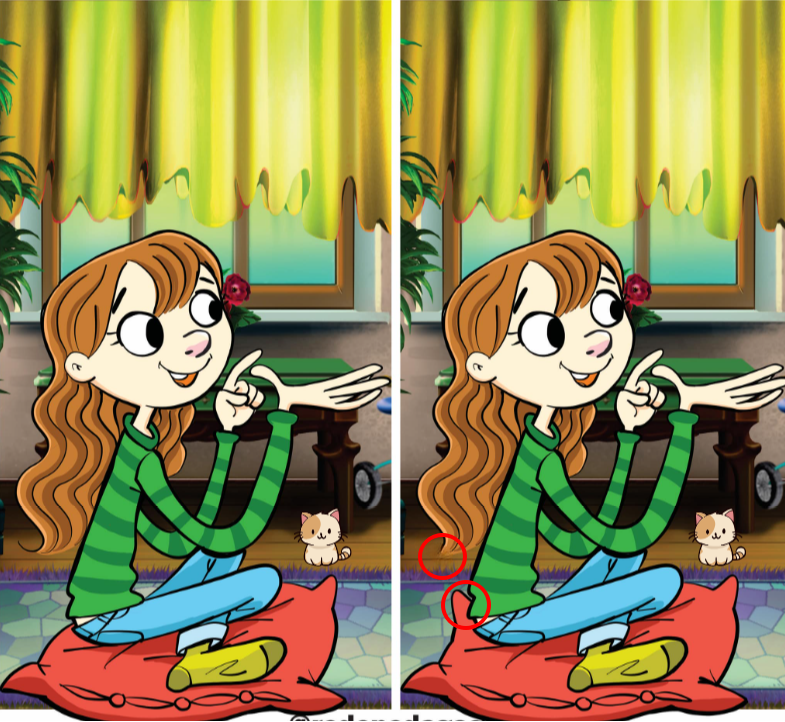
Conclusion: A Fun Way to Sharpen Minds
“Spot the difference” games are far more than just a fun pastime. They are an excellent tool for developing cognitive skills, emotional resilience, and social intelligence. Through these games, children learn to focus, problem-solve, communicate, and develop patience. Whether it’s honing their memory, improving their attention to detail, or learning how to handle frustration, visual puzzles provide a comprehensive mental workout that is beneficial for cognitive development in all stages of life. So next time you pick up a “spot the difference” puzzle, take a moment to appreciate the value it provides — your brain will thank you!
